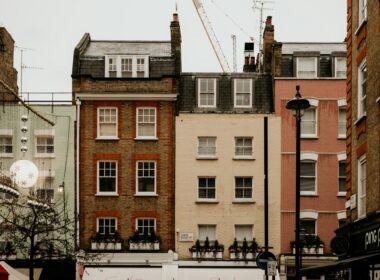Energy Performance Certificates (EPCs) have become a crucial element in the housing market, impacting everything from mortgage eligibility to the ability to rent out a property.
However, many homeowners and landlords face challenges with inaccurate assessments, which can adversely affect their property’s value and rentability.
Fortunately, there are several simple, no-planning-permission solutions available that can improve your EPC score and enhance your home’s energy efficiency.
EPC ratings have a direct influence on several aspects of a property’s value, from mortgage approval to rental opportunities.
Ian Mclaren, co-founder of dwellow, a platform focused on energy savings, explains, “EPC methodology often favours newer properties with standard construction, while older or unconventional homes, such as stone cottages or converted barns, may be unfairly penalised. EPCs also tend to undervalue energy-efficient technologies like heat pumps, which is problematic given the emphasis on greener solutions.”
With the 2025 deadline for rental properties to meet a minimum EPC rating of C, homeowners and landlords have an added incentive to make improvements now.
Here are nine straightforward methods to boost your EPC score—without the need for planning permission.
1. Loft and roof insulation
Heat rises, and uninsulated lofts can cause up to 25% of heat loss in a home. Insulating the loft is one of the most cost-effective ways to improve energy efficiency.
Planning permissions: Generally, no planning permission is required.
Options:
- Roll-out insulation: DIY installation, costing around £5–£10 per square metre.
- Loose-fill insulation: Ideal for irregular loft spaces.
2. Draught-proofing
Draughts are a major source of heat loss, especially around doors, windows, and floorboards.
Planning permissions: No planning restrictions apply.
Options:
- DIY draught strips: Self-adhesive strips for doors and windows (approx. £10–£20).
- Chimney balloons: Block unused chimneys (approx. £20–£30).
- Floorboard sealant: Seal gaps between floorboards (approx. £15 per tube).
3. Secondary glazing
For homes in conservation areas where double glazing is restricted, secondary glazing provides an effective alternative, adding an internal pane of glass or plastic.
Planning permissions: Typically does not require permission as it doesn’t alter the external appearance.
Options:
- Magnetic or clip-on systems: DIY kits (approx. £50–£100 per window).
4. Internal wall insulation
Adding insulation to solid walls can reduce heat loss, although it does slightly reduce room size. The thicker the insulation, the better the heat retention.
Planning permissions: Typically not required unless the property is listed.
Options:
- Insulated plasterboard: Attach directly to the walls (approx. £20–£30 per square metre).
- DIY panels: Pre-insulated panels, easier to install than traditional methods.
5. Energy-efficient lighting
LED bulbs use up to 90% less energy than traditional bulbs, making them a simple upgrade for energy efficiency.
Planning permissions: No restrictions.
Options: Swap all bulbs for LED alternatives (approx. £2–£5 per bulb).
6. Radiator controls
Thermostatic radiator valves (TRVs) allow you to control the heating in each room, saving energy by heating only the spaces you need.
Planning permissions: Generally not required.
Options:
- Thermostatic radiator valves (TRVs): (approx. £15–£20 per valve).
7. External improvements
External insulation and improvements, like cavity wall insulation, help retain heat inside the property.
Planning permissions: Some external upgrades might require planning permission. Always consult your local authority before proceeding.
Options:
- Cavity wall insulation: For homes with unfilled cavity walls built after 1920 (approx. £500–£1,500).
- Roof repairs with insulation: If you are re-roofing, insulation can be added without needing permission.
8. Solar panels
Solar panels can reduce energy costs and boost your EPC rating by providing renewable energy for your home.
Planning permissions: Many solar panel installations fall under permitted development, but may require planning permission if the panels face the main road or are in a conservation area.
Cost: Typically £5,000–£6,000 for a standard system.
9. Curtains and blinds
Thick curtains or thermal blinds reduce heat loss through windows at night, making your home more energy-efficient.
Planning permissions: None required.
Cost:
- Thermal curtains start at around £40 per pair.
- DIY thermal linings cost approximately £10–£20 per window.
These fixes can ‘boost your home’s value and rentability‘
These simple solutions not only help to improve your EPC score but also ensure a more comfortable and energy-efficient living space.
From insulating your loft to installing energy-efficient lighting, each improvement contributes to both cost savings and environmental benefits.
As Ian Mclaren from dwellow explains, “There can be issues with EPC assessments, but by improving the physical energy efficiency of your property, you can overcome these inaccuracies and boost your home’s value and rentability. It’s about understanding what works and implementing these changes to future-proof your property.”




